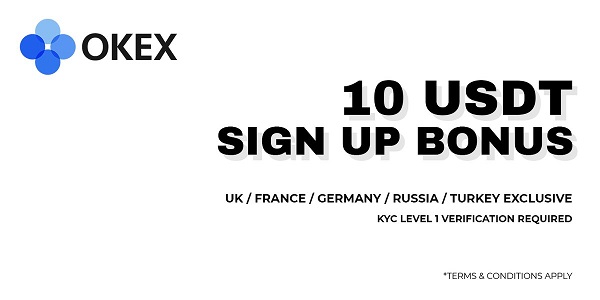
Li Gong is Partner at venture capital firm Youbi Capital.__________
Forget the “crypto bro”, web3 is rapidly maturing. Next-gen tech, funding interest, and emerging platforms contribute to a sector growing 40% every year. As a result, thought leaders, founders, and entrepreneurs are jumping ship from web2 to web3.
This is even occurring at the executive level: Amazon’s Pravjit Tiwana left his position as general manager of Amazon Web Services’ Edge Services to become the chief technology officer of Gemini. Meanwhile, the former head of gaming at YouTube now leads Polygon Studios as its CEO, and AirBnB’s former human resources director also joined Polygon in June.
The influx of brainpower and corporate experience looms as a double-edged sword for the emerging sector. On the one hand, growth hacks and infrastructural oversight can help guide the web3 ecosystem. On the other, mismatched interests and fundamental knowledge gaps can undo such benefits. So, let’s take a step back and consider the pros and cons of web2 joining web3.
Why web2 is jumping ship
Ask nearly all recent arrivals why they joined web3. The answer is the same: the future. They foresee the metaverse and believe the platforms of tomorrow are being created today. So, the idea of getting in on the ground floor is too good to pass up.
These people are also frustrated.
They no longer want to work within corporate confines and red tape. They want to call the shots. Similarly, in the aftermath of the pandemic, web2 wants remote flexibility and the ability to work alongside a global community of entrepreneurs and product builders.
But perhaps the biggest reason for change comes down to funding.
For those launching a new project – and feeling unsupported by the giants of web2 – this space is very attractive. In Q2, seven out of the top ten most active VCs chose web3 as the sector of choice for investment.
Take a look at news outlets and “Big Four” employees switching sides is incredibly common. From Facebook to Google, many of the best and brightest are leaving their jobs to start something new. While many are driven by lucrative funding opportunities and freedom to think outside of the box, web2 migrants do bring important maturity to web3.
Pros: what web2 can improve in web3
There are three aspects where web2 teams can shine in the web3 world.
The first is community growth.
Many web2 teams have first-hand experience in creating platforms that are focused on creating a positive user experience. They also know how to build communities that can grow organically. For example, the team behind the move-to-earn platform Gritti previously established a web2 running app with more than 100 million users. This means they already have a massive network across marathon organizers, athletic brands, and influencers.
Also, years of experience and resources in the web2 space provide Gritti with channels for customer acquisition, whether through online/offline running events or decentralized running communities. In contrast, the vast majority of web3 projects are still limited to Telegram and Discord for most of their marketing efforts. [Editor’s note: Youbi Capital is an investor in Gritti.]
The second is design experience.
Currently, web3 platforms assume an understanding of crypto wallets or blockchain addresses and operate accordingly.
To go mainstream, the user experience must accommodate the masses. Ideally, this requires a similar user experience to web2. An email login, a simple user interface, and intuitive platform navigation. The idea is that platform creators make web3 as comfortable and seamless as possible to onboard everyone.
The third concerns internal management.
This is notable due to the contrast between web2 and web3. In the former, internal roles are readily defined, and working frameworks are established to achieve outcomes. In the latter, projects are less hierarchical, and workers are often entirely remote. As a result, team management is not as efficient as it should be. Again, managerial proficiency typically defines web2 leaders.
Cons: what we must keep in mind
On the flip side, there are detractors to web2 joining web3.
The first is alignment.
Switching sides is not just a new job. Founders: You must understand web3 to succeed in web3. If not, poor products will result in the detriment of the ecosystem. So, do your homework. This is especially true of tokenomics. Done right, tokens offer low-cost capital to provide a user engagement incentive. Done wrong, projects face resource strain in an open and global market.
The second relates to old ways of thinking.
In web2, the entire business model is built on centralized data ownership. In web3, the opposite is the future. Those hailing from traditional social media or banking players might need a process of reeducation to wholeheartedly embrace decentralization. Future focus – and not looking backwards – is the only way to succeed in this paradigm shift.
Ironically, it’s not just the workers of web2 trying to move with the times. For example, Google is building its own web3 division. Meanwhile, JP Morgan is experimenting with decentralized finance (DeFi). The issue, as mentioned, is that such business models are at complete odds with web3. While these corporations seek evolution, the only way they can truly succeed is to build something that competes with themselves.
The verdict: the good outweighs the bad
Despite the roadblocks, web2 talent can provide much-needed experience to help build better web3 products. They enter the segment at an important time with product-market fit and C-level insights. In turn, web3 provides them with the chance to experiment, call the shots and have a say in the internet of the future. Ultimately, each side benefits from the other. Whatever happens, this is one space to watch.
____
Learn more: – Japanese Mobile Firm NTT Plans to Invest $4 Billion in Web3 Technology – Find Out Why- JPMorgan Exploring Digital Identity Wallets in Web3
– DBS Adopts DeFi Protocols for FX & Government Securities Transactions- Is Disney About to Make its Big Crypto Move into NFT, Metaverse and DeFi?
– Starbucks Odyssey Makes Big Bet that Web3 and NFTs Can Make Rewards ‘Immersive’- The Future of Web3 Will Be Multichain and Chainless at the Same Time






Be the first to comment